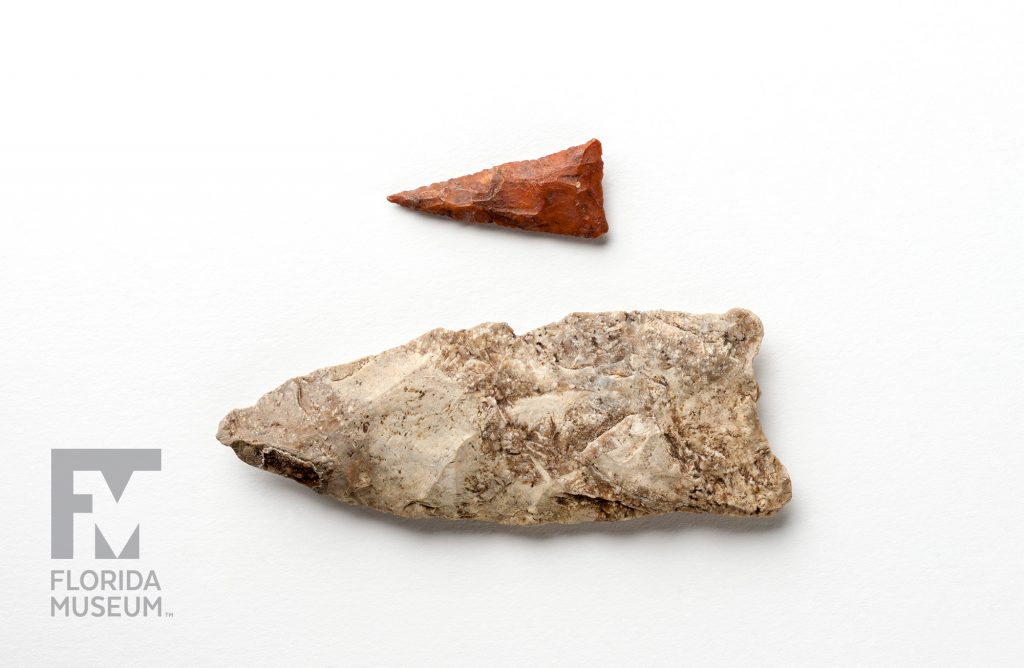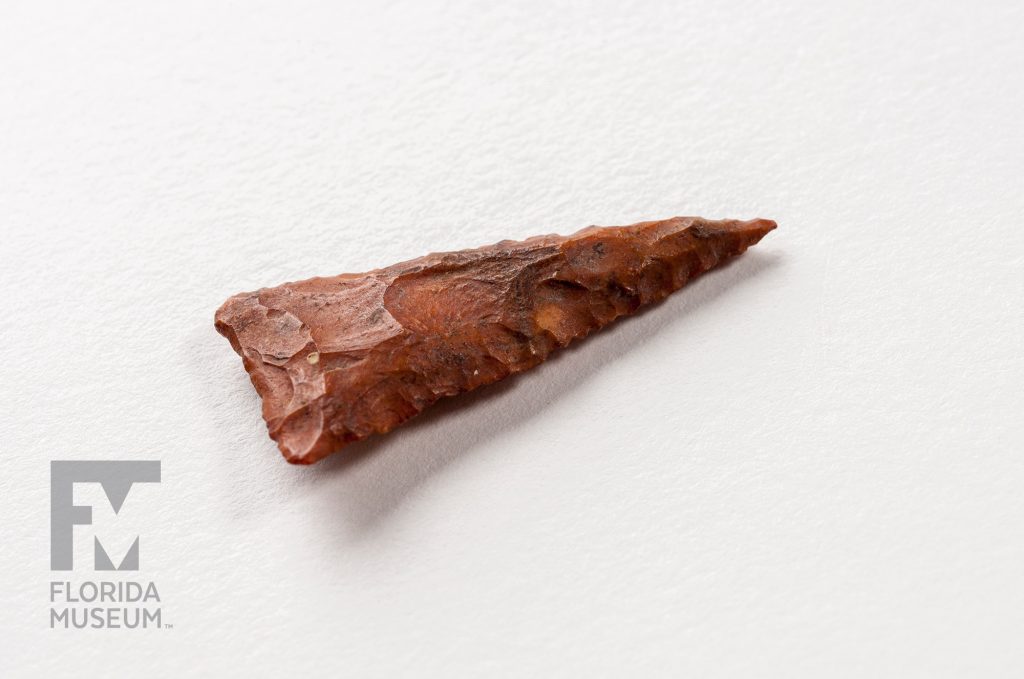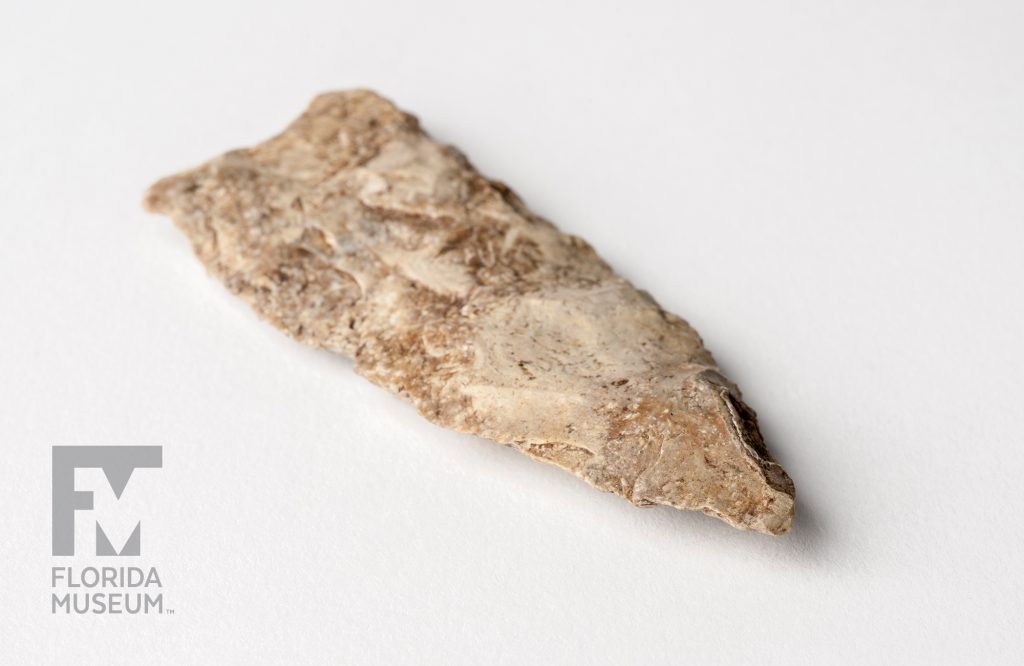Projectile points vary in size, shape and function, from small true “arrowheads” to larger points used as spears. In the 1950s-1960s, Curator Ripley Bullen classified more than 600 points to better understand stone tools. Scholars still use and debate this important collection.
Summary
Florida Projectile Points
True Arrowheads (Pinellas Type)
Found in Alachua Co., Florida
Dates to ~1250–1600 BC
Florida’s Earliest Projectile Points (Suwannee Type)
Location Information Unknown
Dates to ~10,000–8000 BC
From the Ripley Bullen Type Collection
Collection
Story
These are examples of some of the most iconic stone tools from Florida: hafted bifaces, also known as projectile points. Bifaces are stone tools that were worked on two sides to achieve their shape. They were hafted with pine pitch and animal sinew to a shaft to make a functional spear, or arrow, or knife.
The larger example here, known as a Suwannee point, was the tip of a spear 12,000 years ago at the end of the last ice age, and might have been used for dispatching now-extinct megafauna such as mammoth and mastodon.
The smaller example, known as a Pinellas point, was the tip of an arrow—a true arrowhead—that was used after about 600 A.D., with the widespread adoption of bow and arrow technology.
These artifacts come from the type collection compiled in the 1950s and ’60s by Ripley Bullen, the curator and seminal figure in Florida archaeology. The shapes of these stone tools show patterns across time and space, making them useful for understanding chronological and cultural relationships. Bullen provided an important foundation for creating projectile point typologies, and generations of archaeologists have used and refined his compilation for nearly 50 years.
Neill Wallis
Associate Curator, Florida Archaeology*
Florida Museum of Natural History
Additional Information
Browse the Ripley Bullen Projectile Point Type Collection
Exhibit
On display Sept. 23, 2017-Jan. 7, 2018, Rare, Beautiful & Fascinating: 100 Years @FloridaMuseum celebrated the Museum’s rich history. Each Museum collection was asked to contribute its most interesting items and share the stories that make them special. Though the physical exhibit is closed, this companion website remains online, providing an opportunity to experience the Florida Museum’s most treasured specimens.
Exhibit Area: Faces of the Museum
Theme: Dedicated Employees
 Want to see more? Explore more than 300 breathtaking color photos of plants, animals, fossils and cultural heritage materials from the Florida Museum of Natural History’s collections in the award-winning book All Things Beautiful available from the University Press of Florida.
Want to see more? Explore more than 300 breathtaking color photos of plants, animals, fossils and cultural heritage materials from the Florida Museum of Natural History’s collections in the award-winning book All Things Beautiful available from the University Press of Florida.
*This title was accurate at the time the exhibit was on display in 2017. Please visit the collection website to verify current staff and student information.


